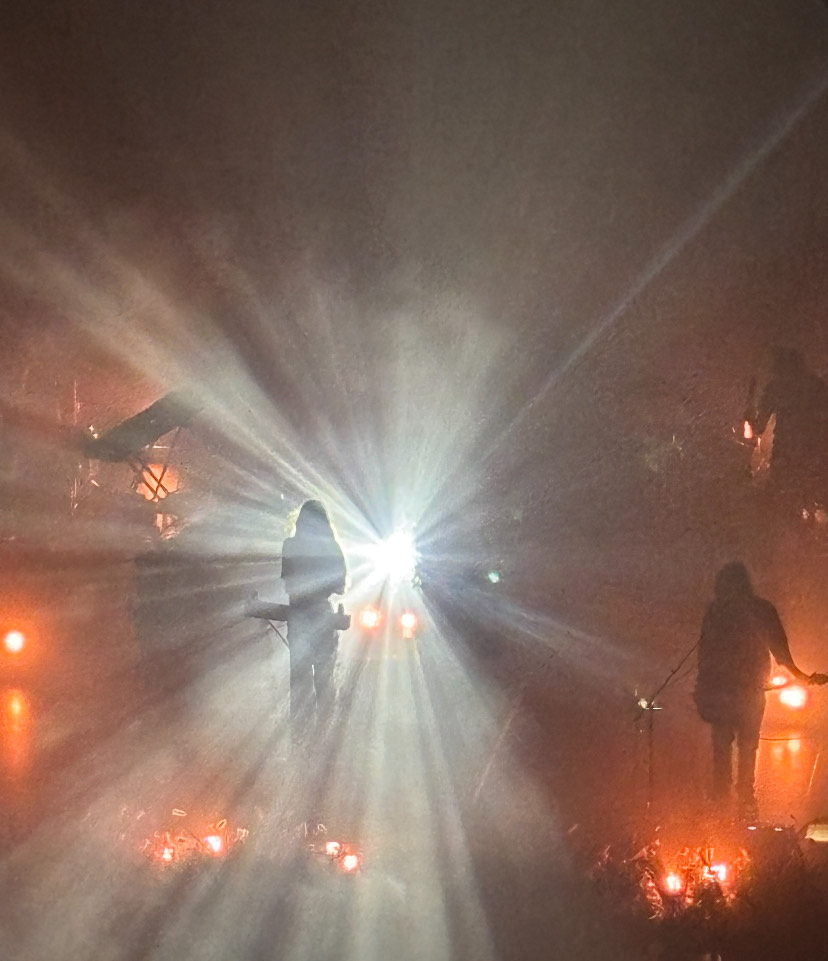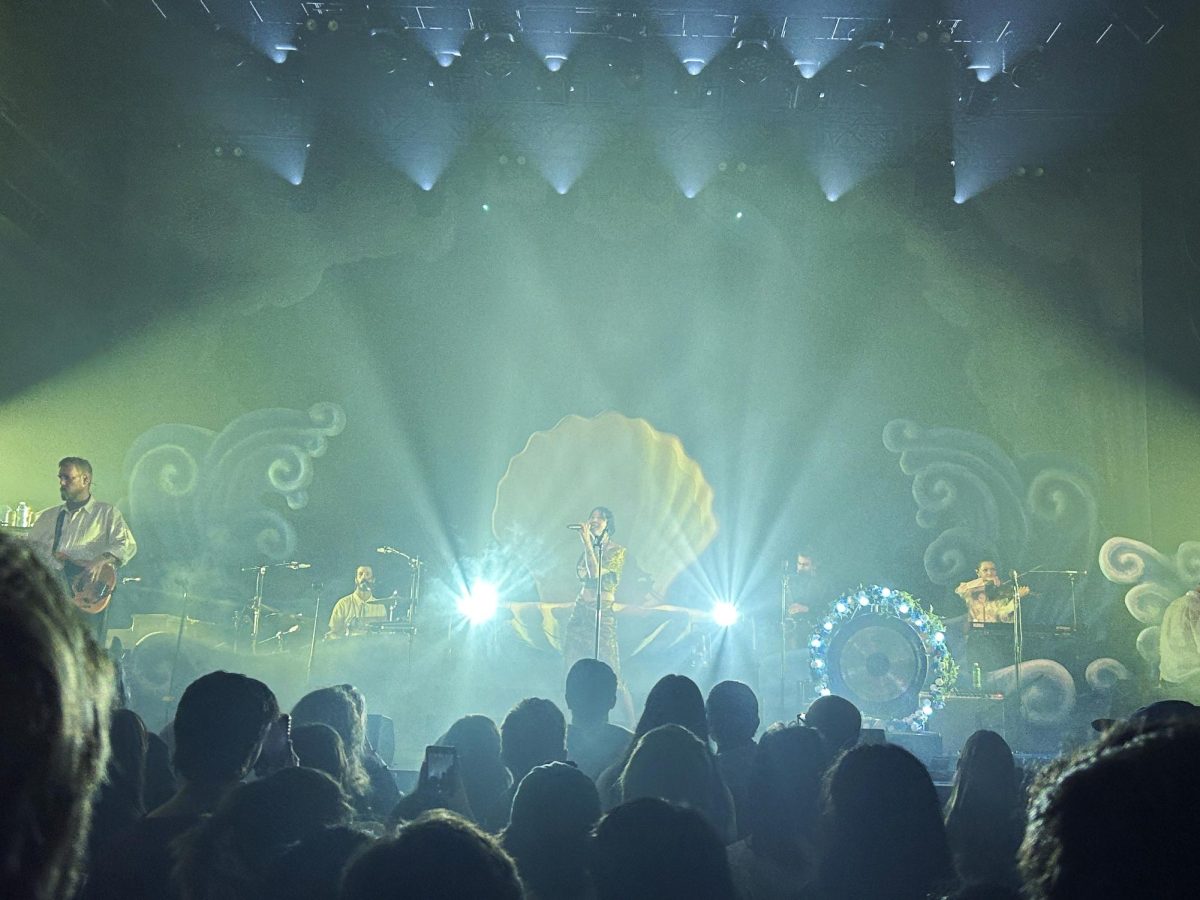On Jan. 16, acclaimed director and screenwriter David Lynch died. Among the reactions to his death, I saw photos shared on social media of movie theater marquees with messages honoring his life and work. Both despite and because of the strangeness of his work, movie theaters —, and especially independent movie theaters —, have once again become venues to appreciate Lynch’s work. With that in mind, I was happy to see that the Grandview Mann Theater would also be honoring Lynch by showing his movies during their April “Rewind” series.
Every month, the Grandview shows four older movies and presents them consecutively with a common theme. Themes from the last year include “Love on the Run,” which included “Bonnie & Clyde” (1968), and “Female-centered movies with award-winning soundtracks,” such as “Carol” (2015). The latter theme could include movies of a vast range of tones and genres. However, April’s theme was very cohesive: it was a look at movies directed, and often also written and produced, by David Lynch. Moviegoers could see different facets of his work across the four selected films.
The Grandview first showed “Blue Velvet” (1986), a neo-noir movie starring a young Kyle MacLachlan, who would later play Dale Cooper on Lynch’s celebrated “Twin Peaks” television series. “Blue Velvet” explores a college student’s interaction with the darkness hidden in an idyllic town. MacLachlan also starred in the next movie, Lynch’s polarizing “Dune” (1984), based on the same novels as the recent “Dune” movies. The third movie of the month was neo-noir horror “Lost Highway” (1997), and the fourth was one of Lynch’s best-known works, the unsettling black-and-white piece “Eraserhead” (1977). I chose to see “Blue Velvet” and “Eraserhead,” having previously only seen “Mulholland Drive” (2001) out of Lynch’s movies.
On April 3, I walked down Grand Avenue at 9 p.m. for my first Lynch movie of the month, “Blue Velvet.” I was immediately surprised at the attendance; there seemed to be several times more people than I had seen at a Grandview movie before, despite the weeknight showtime. It appeared people were enthusiastic about Lynch.
“Blue Velvet” opens with vibrant red poppies against a blue sky, and throughout the movie, the visuals are vivid and cohesive. The film tells the story of Jeffrey, played by MacLachlan, a young man home from college to spend time with his sick father. When Jeffrey finds a severed human ear in a field, he takes on the role of amateur detective, involving himself in the mystery and working with the police detective’s daughter Sandy, played by Laura Dern.
In one “Blue Velvet” scene, a character shouts angrily about his preference for a certain brand of beer, prompting laughs from the audience, which made me realize how many of the people in attendance had likely seen this movie many times since its release in 1986. I also noticed some moviegoers were uncomfortable during the moments of unconventional sexuality and sexual assault, which increased the intended viscerality and discomfort of those scenes for me. I found “Blue Velvet” to be a very good movie, a few degrees more grounded in reality than “Mulholland Drive.” I walked back to campus at 11 p.m. with the song “Blue Velvet” by Bobby Vinton, featured several times throughout the movie, playing in my head.
In retrospect, the experience of watching my second Grandview Lynch movie, “Eraserhead,” started before I got to the theater. On April 20, the walk to the Grandview was dark and shadowy, and due to the current construction, the road was completely torn up into gravel, which held puddles of rain. “Eraserhead” similarly showcases locations and items that have been altered by industry: damp roads, smokey exhaust pipes, grotesque farmed meat and the mechanical levers of factories.
Although also well-attended at the Grandview, this movie was immediately a different experience from “Blue Velvet” because it was in black-and-white. While the previous movie created beautiful, painting-like sets, the cinematography of “Eraserhead” shows an impressive ability to make even a simply furnished bedroom appear inhospitable.
The conflict of this film is that Henry, the central character played by Jack Nance, is contacted by a former partner, who tells him she has had their child. This baby is creature-like, sick and wailing. I was surprised at how startled I was by some of the imagery in this movie, such as a smiling woman with facial makeup that enlarged her cheeks. All of these visuals were bolstered by the use of atmospheric sounds that highlight startling moments and add to the industrial feeling.
For long stretches, there was no dialogue. As such, if I were watching at home, I might have been tempted to become distracted by checking my phone. In a movie theater, I was instead more drawn in by the larger screen and speaker system, discouraged from checking my phone by movie theater etiquette. Maintaining focus in this way allowed me to fully experience the movie in a way I wouldn’t have were I not at a theater.
This Grandview Rewind was a meaningful tribute to David Lynch’s distinctive work, and I enjoyed seeing movies for the first time with enthusiastic audiences and with my full focus on the films. This experience reminded me again of the value of seeing movies in theaters.







